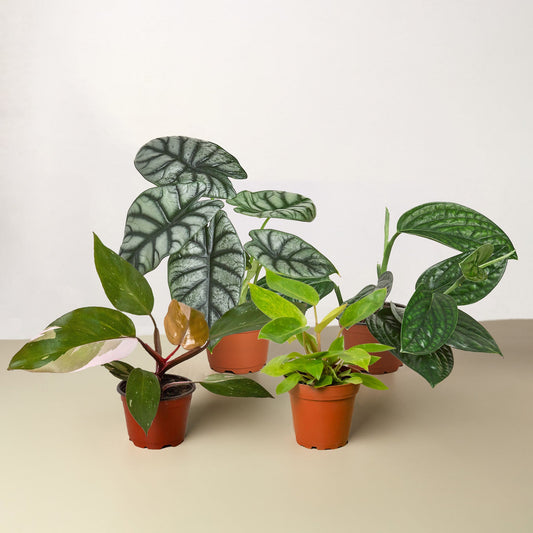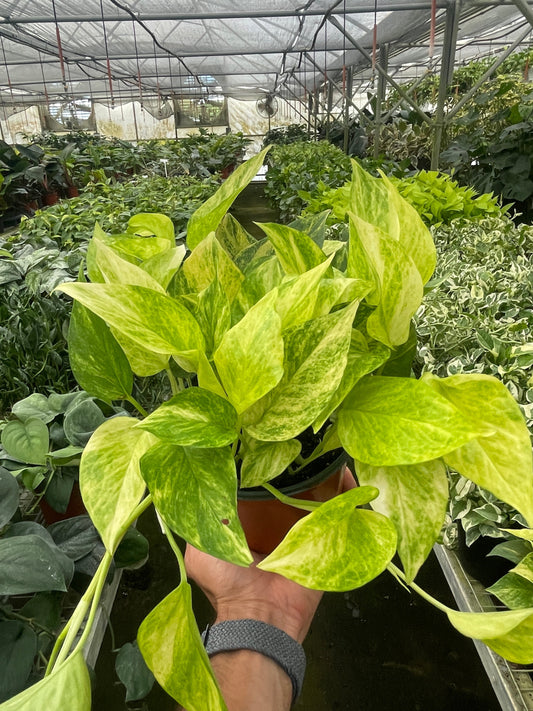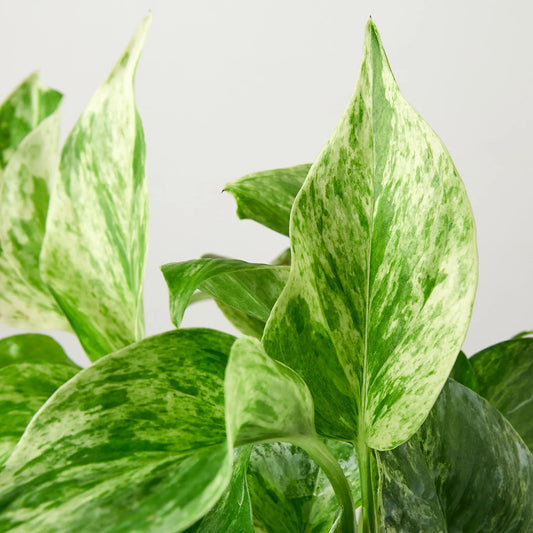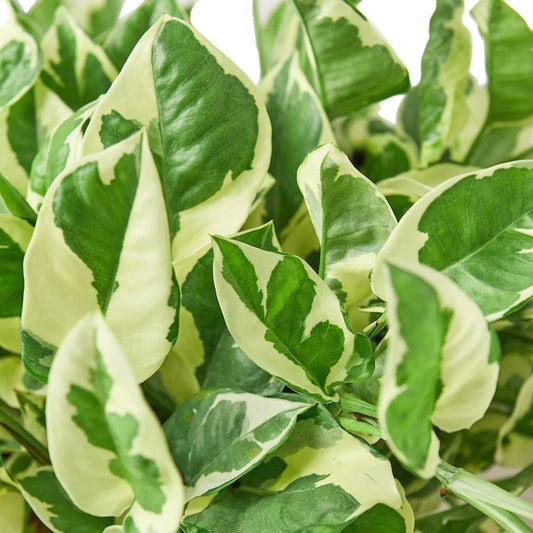How to Grow and Care for Zebra Plants
Cafe Planta Team
Ever noticed a plant with striking white stripes on its lush green leaves and thought, "Wow, what is that?" Well, that's the Zebra Plant, or Aphelandra squarrosa, to be precise. This tropical beauty can be quite the showstopper in any indoor garden with its bold foliage and occasional bright yellow blooms.
In this article, we'll chat about everything you need to know to grow and care for Zebra Plants at home. From light and watering needs to dealing with common pests, you'll have all the tips and tricks to ensure your Zebra Plant thrives. Let’s dive right into the wonderful world of plant care!
Getting to Know the Zebra Plant
The Zebra Plant hails from the tropical rainforests of Brazil, which might give you a hint about its care needs. These plants are known for their glossy, dark green leaves with bold white veins that resemble zebra stripes. Standing out among the foliage, the Zebra Plant also produces bright yellow flower spikes, usually in late summer or fall, that can last up to six weeks.
While they are stunning, Zebra Plants are known to be a bit finicky. They're not your set-it-and-forget-it type of plant, but with a little attention and the right conditions, they can thrive beautifully indoors. So, what makes these plants happy? Let's break it down.
Light Requirements
One of the first things to understand about Zebra Plants is their light preferences. Given their tropical origins, they love bright, indirect light. Imagine the dappled sunlight filtering through the canopy of a rainforest—this is the kind of light they crave.
Direct sunlight can scorch their leaves, leading to brown tips or edges, so avoid placing them in a spot where the sun’s rays fall directly on the plant. Instead, a location near an east or north-facing window is ideal. If you only have a south or west-facing window, sheer curtains can help diffuse the light.
Interestingly enough, if you notice your Zebra Plant stretching or becoming leggy, it might be a sign that it's not getting enough light. Adjust its position until you find that sweet spot where it seems to thrive.
Watering Tips
Zebra Plants love moisture, but overwatering can lead to root rot, a common pitfall for many plant parents. It's all about finding that balance. The soil should be kept consistently moist but not soggy.
Here are a few tips to get it right:
- Water when the top inch of soil feels dry to the touch. You can check by sticking your finger into the soil.
- Ensure your pot has drainage holes to prevent water from accumulating at the bottom.
- During the growing season (spring and summer), you might need to water more frequently as the plant is actively growing.
- In the fall and winter, reduce watering since the plant's growth slows down.
Remember, it's always better to under-water slightly than to overwater. If you're ever in doubt, wait a day or two and check again.
Humidity and Temperature
Being a tropical plant, the Zebra Plant loves high humidity levels. If your home is particularly dry, especially in the winter, you might need to take extra steps to boost humidity.
Consider these options:
- Mist the leaves regularly with water.
- Place a small humidifier near your plant.
- Group it with other humidity-loving plants to create a microenvironment.
- Set the plant on a tray filled with pebbles and water, ensuring the pot doesn’t sit directly in the water.
As for temperature, Zebra Plants prefer a warm environment. Keep them in a space where temperatures range between 65°F and 75°F. Avoid placing them near drafts, heaters, or air conditioners, as sudden changes can stress the plant.
Soil and Potting Needs
Choosing the right soil is crucial for your Zebra Plant’s health. They thrive in a well-draining potting mix. You can either purchase a mix specifically for tropical plants or create your own by combining equal parts peat, pine bark, and perlite.
When it comes to repotting, Zebra Plants typically need to be repotted every two years or when you notice roots growing out of the drainage holes. Choose a pot that's one size larger than the current one, and make sure it has adequate drainage.
During repotting, gently remove the plant from its current pot and shake off excess soil from the roots. Place the plant in its new home, fill with fresh potting mix, and water thoroughly to help it settle in.
Feeding and Fertilizing
Like many houseplants, Zebra Plants benefit from a little extra nutrition during the growing season. Use a balanced liquid fertilizer every 4-6 weeks from spring through early fall. Dilute the fertilizer to half the recommended strength to avoid fertilizer burn.
During the winter months, when the plant's growth slows down, you can pause feeding altogether. Keep an eye on the plant's leaves for signs of nutrient deficiency, like yellowing or slow growth. If you spot these, you might need to adjust your feeding schedule slightly.
Dealing with Pests
Unfortunately, Zebra Plants can sometimes fall victim to pests like spider mites, aphids, or mealybugs. Regular checks and prompt action can help manage these unwanted guests.
Here’s how to tackle common pests:
- Inspect your plant regularly, especially on the underside of leaves.
- If you notice pests, start by washing them off with a gentle stream of water.
- For more stubborn infestations, wipe the leaves with a mix of water and mild dish soap or use a horticultural oil or insecticidal soap.
- Isolate the affected plant to prevent pests from spreading to other plants.
Maintaining a clean and healthy environment for your Zebra Plant can help keep pests at bay. Dust the leaves regularly and ensure good air circulation around the plant.
Encouraging Blooms
While the Zebra Plant is primarily grown for its stunning foliage, those bright yellow flower spikes are a delightful bonus. Encouraging your plant to bloom requires a little patience and the right conditions.
Here are a few tips:
- Ensure your plant receives adequate light, as poor lighting can hinder blooming.
- Maintain consistent humidity and temperature levels.
- Feed the plant regularly during the growing season to provide the necessary nutrients for blooming.
- Prune any dead or damaged leaves to encourage new growth and blooms.
If your plant still refuses to bloom, don't fret. Some Zebra Plants just need more time and a bit of extra TLC to show off their flowers.
Common Problems and Solutions
Even with the best care practices, you might encounter a few hiccups along the way. Here are some common problems Zebra Plant parents face and how to fix them:
- Leaf Drop: This can be caused by sudden changes in environment, such as drafts or moving the plant. Ensure stable conditions and avoid relocating the plant unnecessarily.
- Brown Leaf Tips: Often a sign of low humidity or overwatering. Increase humidity levels and adjust your watering routine.
- Yellow Leaves: This might indicate overwatering or nutrient deficiency. Check your watering schedule and consider feeding the plant.
- Leggy Growth: Usually a sign of insufficient light. Move the plant to a brighter spot with indirect sunlight.
Addressing these issues promptly will help keep your Zebra Plant healthy and vibrant.
Final Thoughts
Caring for a Zebra Plant can be a rewarding journey, full of learning and growth—both for you and your plant. With the right conditions and a little patience, you'll enjoy the beautiful foliage and maybe even some bright blooms.
At Cafe Planta, we love helping plant people create beautiful, thriving indoor gardens. Whether you have questions about plant care or need guidance in choosing your next plant, feel free to email us or drop us a DM on Instagram. We believe plants bring people and nature together, and we're excited to be part of your plant journey!



















